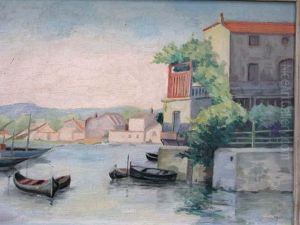Emile Fernand-Dubois Paintings
Émile Fernand-Dubois was a French sculptor known for his decorative sculptures and medals. Born on March 29, 1869, in Paris, he was active during a vibrant period in French art, contributing to the country's rich tradition of sculpture.
Fernand-Dubois studied at the École des Beaux-Arts in Paris under the tutelage of renowned sculptors such as Alexandre Falguière and Antonin Mercié. His education in such an esteemed environment provided him with the classical training that would underpin his later work. He exhibited his pieces at the Salon des Artistes Français, a highly prestigious venue for artists of the time, and was a member of the Société des Artistes Français.
Throughout his career, Fernand-Dubois produced a variety of works ranging from public monuments to more intimate and decorative pieces. His style encapsulated the transition from the academic traditions of the 19th century to the more expressive and stylistic tendencies of the early 20th century. Although he was not at the forefront of the avant-garde movements that characterized this era, his work reflected the changing tastes and sensibilities of the time.
Fernand-Dubois' sculptures often featured allegorical subjects, mythological figures, and historical themes, executed with a sense of realism and attention to detail. He was also known for his work in creating medals, which were popular commemorative items in France during his lifetime. His medals often celebrated important events, figures, or achievements and were crafted with the same skill and artistry as his larger sculptural works.
Émile Fernand-Dubois passed away on May 18, 1952, leaving behind a legacy of work that continues to be appreciated for its craftsmanship and historical value. His contributions to French sculpture are remembered through the pieces that still exist today, many of which are held in private collections and museums across France.
